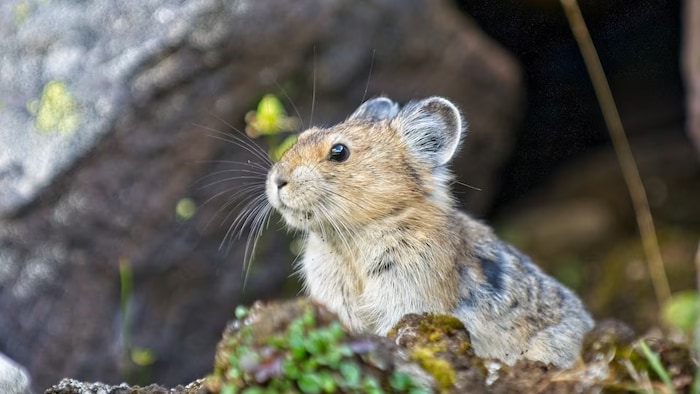Open in full screen mode The American pika is considered a “climate sentinel,” a species particularly sensitive to change, meaning it can serve as an early indicator of potential problems for its ecosystem. Radio-Canada Feature being tested Log inCreate my account Speech synthesis, based on artificial intelligence, makes it possible to generate spoken text from written text . Researchers at the University of British Columbia Okanagan are developing a genetic monitoring tool that could revolutionize the way ecologists study American pika populations, and even provide insight into how climate change is affecting their habitat. By analyzing the DNA of this small herbivorous mammal, a cousin of the rabbit, particularly in their excrement, researchers believe they will soon be able to follow pikas individually, monitor the interconnectivity between the different populations of the small animal that lives in the mountains, and record the evolution of these populations in near real time. Recent improvements in accessibility and more affordable prices of DNA sequencing technologies have opened the door to a deeper understanding of the species. Climate Sentinels The American pika can be found at high altitudes in parts of the Canadian Rockies and the Coast Range of the British Columbia, in rocky, arid habitats with little vegetation. According to Parks Canada ecologist Tony Einfeldt, pikas are considered one of the species most vulnerable to climate change. As temperatures increase, forests expand to higher elevations reducing their habitat space. Warmer temperatures can also reduce the winter snow cover on which the species depends for protection during the winter and reduce the amount of food available. Biologists expect that pikas will be forced to increasingly move to higher altitudes, which could further isolate populations from each other. others, a common decline factor in many species. Pikas' sensitivity to climate change makes them an excellent indicator species, a climate sentinel say many experts.
The rocky habitat of pikas, found in various mountain ranges in Canada and the United States, is expected to slowly disappear as the climate warms and forests expand to higher elevations.
In the United States, limited evidence shows that some pika populations have some adaptive capacity, but others are experiencing widespread decline. The state of Canadian populations is less well known, largely due to a lack of genetic data, says researcher Kate Arpin of the University of British Columbia Okanagan.
She hopes the genetic monitoring tool she and her collaborators have built can soon change that.
Even though she admits that this type of genetic surveillance is very new, advances have been made for other species, including polar bears and deer.
The use of this type of genetic monitoring tools is certainly promising, she believes, specifying that if the sampling is carried out over several years, it could potentially be possible to observe the evolution of the species through its excrement.
Current pika monitoring efforts involve going to their habitats and counting the number of hay piles the pikas gather as a source of winter food.
If researchers can achieve high precision with fecal samples, it would mean a change in approach for Parks Canada ecologists who monitor pikas.
Usually we try to avoid touching droppings, Tony Einfeldt admits, but we put on our rubber gloves and went looking for the freshest and best poops we can find.
With information from Darius Mahdavi

